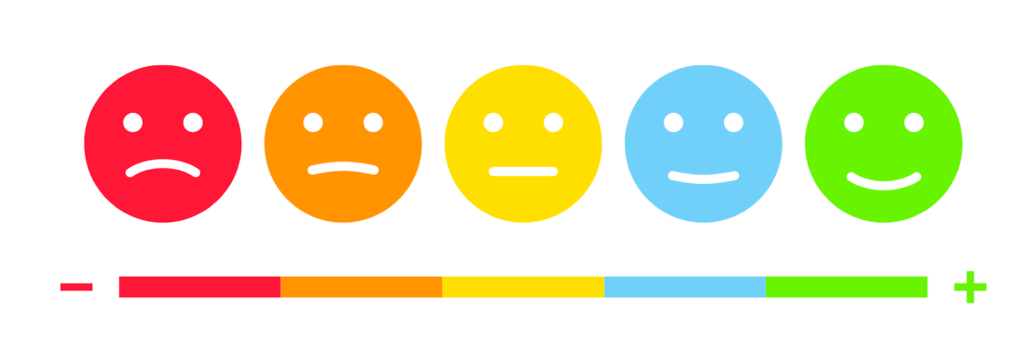
The race to acquire customers has just gotten faster. Competitors are now leveraging intent data to catch potential customers much earlier in the buyer journey. Those who haven’t started using this particular dataset in their sales and marketing efforts are now at risk of getting left behind. But what is intent data and why is it becoming increasingly in demand in sales and marketing?
In this article, you’ll learn what intent data is, where you can find it, the types of intent data, what benefits it offers, and other useful pieces of information about it. Let’s start by defining what it is.
What Is Intent Data?
Intent data is a dataset of a prospect’s actions—whether that prospect is an individual or an organization—that gives clues about the prospect’s intent on a product or service. Basically, the more a prospect consumes content around a given topic, product, or service, the higher the chance that prospect is ready to become a customer.
This dataset can help businesses pinpoint where a prospect is in its buyer journey and enables them to take appropriate action. For example, let’s say that a certain lead is extensively researching cloud cost optimization. The marketing team of IgniteTech (which happens to offer cloud cost optimization) can expose that lead to relevant content that would educate and nurture it. On the other hand, if the same lead is close to making a buying decision, that should signal IgniteTech’s sales reps to make their move.
You have two types of intent data. Ideally, you’d have access to both to really have a leg up over your competitors. Let’s talk about those two types of intent data now.
Types of Intent Data
The two types of buyer intent data are first-party intent data and third-party intent data. Let’s talk about each of these in more detail, starting with first-party intent data.
First-Party Intent Data
First-party intent data is intent data that’s always in your possession. You usually acquire it through web analytics tools installed on your website, your web forms, and other data collection tools under your control.
One major advantage of your collection of first-party intent data is that, because it’s gathered by your tools and your tools alone, it’s unique. No one else has that exact same dataset. Thus, it’s the one thing that can differentiate your collection of buyer intent data from what your competitors have.
However, you shouldn’t rely solely on first-party intent data for your sales and marketing initiatives. Remember that you acquire first-party intent data when potential customers interact with your data collection tools. You might be wondering about the prospects that haven’t interacted or will never interact with your tools. That’s where third-party intent data comes into play.
Third-Party Intent Data
While you can find first-party intent data in your assets, you typically find third-party intent data in other places—specifically, other people’s websites, search engines, online forums, etc. You don’t have to collect the data yourself, rather, you purchase intent data from data providers. These providers source the data from publisher networks, other websites, and data co-ops, and then sell or deliver that data as part of a service to interested parties like you.
A big advantage of using third-party intent data over first-party intent data is that you can acquire it even if a prospect hasn’t visited your site. Usually, prospects that visit your site are already further along in the buyer journey. That means, using third-party intent data is better at helping you find prospects that are still starting out, or early, in their journey.
So, I’ve talked about first-party intent data and third-party intent data. Surely, you should pick one over the other, right? Well, maybe that’s not entirely correct. It’s actually better for you to have both! Let’s understand why.
Why You Should Have Both First-Party and Third-Party Intent Data
Let’s say your company sells firewalls and you’ve been tracking 100 companies over the past month. Third-party B2B intent data from your data provider has shown that members of these 100 companies have been watching videos and reading articles about network security. You can say that all these companies are potentially interested in buying a firewall. Other firewall vendors who also purchase B2B intent data from the same data provider can see that too.
Now, it so happens that a member of one of those companies has actually downloaded a white paper about firewalls from your site. This single first-party intent data combined with the third-party intent data you already have will tell you that this particular company really has a strong intention to buy a firewall. Notice that this sales intelligence is yours alone. This is just one example showing the benefit of combining first-party and third-party intent data!
First-party and third-party intent data each have their own strengths. However, you can get a more complete picture of your prospects’ buyer journey and your target market in general if you combine both. You can then craft your sales and marketing strategies accordingly.
Now, you know that you can find first-party intent data in your own assets, while you can find third-party intent data in other people’s assets. But where can you find this collection of intent data exactly? Find out in the next section!

Where Can I Find Intent Data?
You can find intent data in several places. In this section, I’ll highlight these areas and discuss them in more detail. First up is your CRM system:
Your CRM System
Customer Relationship Management (CRM) systems, such as Hubspot and Salesforce, are a great source of first-party intent data—assuming of course you’re using these platforms. They have a wide range of tools for generating and nurturing leads, as well as building and tracking customer relationships. You can dive into some of these tools and have a look at the number of website clicks, email clicks, CTA (call-to-action) button clicks, downloads, etc., to gauge a prospect’s intent. If a prospect fills up a form, you’ll find that prospect’s contact data as well.
Pro Tips:
Once you’ve identified a prospect through your CRM, be mindful of that prospect’s intent. For example, if a prospect downloads a top-of-the-funnel white paper (e.g. something about network security), don’t attempt to close a deal first. Instead, you can recommend middle-of-the-funnel content that highlights solutions to their problem and this, hopefully, will increase their level of intent. You can also recommend a case study of a customer that has benefited from your firewall, for instance. CRM systems like Hubspot have a way of tracking visitor activity on your site, so just track that prospect’s activities and respond accordingly.
Google Analytics
Google Analytics (or any web analytics tool for that matter) offers you several ways of analyzing first-party intent data. For example, you can look at a report that combines Landing Page and Second Page views to gain insights on visitor navigation paths. If visitors are going from your homepage straight to an offer page, then that would show a high buyer intent. Furthermore, you can also get insights on navigation behavior through the Navigation Summary report. When you click on a page on this report, you can see which pages visitors are going to next. This is crucial to you as a sales rep because it might indicate what their intentions are!
Pro Tips:
Note that the intent data you get from GA is anonymous. This means that you won’t be able to track qualified leads using this tool alone. For this purpose, you’ll want to collect lead data from a CRM system like Salesforce and then import the CRM data into GA.
Social Media
Social media platforms such as Twitter, LinkedIn, and Sina Weibo are excellent sources for third-party intent data. Because social media users often post explicitly what they intend to do—e.g., “I’m saving up for an iPhone 13 Pro”—you don’t have to guess what their intentions are. Also, you can leverage these sites’ built-in tools to mine or collect intent data.
Pro Tips:
On Twitter, you can use the Stream API to collect intent data. Additionally, on LinkedIn, you can use LinkedIn Website Demographics for the same purpose.
Intent Data Providers
Because mining requires a high degree of technical know-how, it’s difficult to mine intent data from third-party sites such as social media sites, publishing networks, review sites, etc. The easiest way is to simply purchase intent data from intent data providers. You can acquire B2B intent data from providers such as Triblio, ZoomInfo, Demandbase, and Bombora.
Pro Tips:
When choosing an intent data provider, look for those that readily integrate with your CRM system. Also, remember that intent data doesn’t necessarily accompany lead data. Because of this, look for a solution that automatically maps intent data with leads and/or accounts.
Those are some areas that you easily find intent data in! However, note that too much of a good thing is bad for you. Before moving on, here are some tips for you to keep in mind when dealing with the collection of intent data.
Tips to Avoid Drowning In Intent Data
Just like any type of data, your collection of intent data can grow so big that you’ll find it difficult to make sense of it all! To avoid the sales rep dilemma of drowning in your stockpile of intent data, you can adopt the following best practices:
- Strive to have a single source of truth. This enables you to avoid duplicate efforts and inconsistent analysis of the same problem. One way to do this is by using a single platform for collecting, processing, and storing your sales and marketing data. As much as possible, every department in your organization must use that platform.
- If you already have different data-collecting solutions and, for whatever reason, it’s impossible to bring all your departments together into a single platform, try to integrate those disparate solutions. That’s why in one of the pro tips above, I suggested that you choose an intent data provider that integrates with your CRM system. Keep this in mind going forward! Again, the goal is to have a single source of truth.
- Consider using data visualizations to your advantage. It’s never fun looking at numbers and text on spreadsheets. It’s also hard to get quick insights or catch trends that way. Those are best captured with graphs. Therefore, look for solutions that transform data into graphs and use them well!
Those are some tips you can use to avoid “intent data collection burnout.” So what’s next? Let’s say you now have a healthy stash of intent data. What good will that do? What are the benefits of acquiring intent data? Let’s talk about that now.
Benefits of Collecting Intent Data
For the average person, a mountain of intent data may not mean anything. But for sales reps and marketers, a good amount of intent data can be a gold mine. Here are some benefits of collecting intent data:
Enhances Lead Scoring
Lead scoring is the process of attributing points to leads and then ranking them based on their total accumulated points. This is important because you’re bound to accumulate a large number of leads from your various marketing campaigns. However, you can’t possibly reach out to all of them at the same time. By ranking each lead, you’ll know which ones to prioritize in your sales and marketing efforts.
Intent data is a crucial criterion for lead scoring because it’s a great barometer for determining how close a prospect is to making a purchase decision. Moreover, remember that if you use third-party intent data, you can catch prospects early on. Thus, if you incorporate intent data into your lead scoring models, your sales teams will find your lead rankings more reliable and effective.
Increases Cold Outreach Success Rate
Cold outreach refers to the spray and pray sales tactic where you contact prospects that have no previous relationship with your business. You can do this through email, instant messaging, phone, and other forms of communication. Since the prospects likely know nothing about your business or your product/service, they might not show any interest in your offer.
However, if you use intent data, you can identify prospects that do have some degree of interest. Perhaps they’ve already viewed articles, white papers, videos, and other content related to your solution. If so, you can then focus your cold outreach efforts on those particular prospects. Since they’ve already expressed interest in your solution, the chances of them responding favorably to your call or email will be much higher.
Reduces Customer Churn
Customer churn, or customer attrition, is a measurement of customers leaving your business. Customers leave for a variety of reasons. Maybe they can no longer afford your service. Or maybe they’ve stopped doing business. These are things you can’t control. However, if they’re leaving because you’re lacking something, you’ll want to know before that happens. Intent data can help you in that regard.
Intent data, especially the third-party kind, will enable you to see if existing customers are researching competing solutions and certain features or services. If those features or services aren’t supported by your solution, but your competitors have them, then you might want to consider adding them. By using intent data to discover deficiencies in your solution, you can address those deficiencies and reduce customer churn rates.
Strengthens Account-Based Marketing Tactics
Account-Based Marketing (ABM) is a marketing strategy that involves identifying target accounts and creating highly personalized marketing campaigns for them. You can then implement these campaigns through the usual marketing methods such as events, webinars, emails, and paid ads. The difference is that instead of casting a wide net, you’ll tailor for a specific company/individual.
To strengthen the effectiveness of your ABM campaigns, you can use buyer intent data to identify a target account’s pain points and where it stands in its buyer journey. Intent data marketing will enable you to further customize your messaging and content to match the account’s intentions in a given period.
Improves User Experience on Your Website
Your prospects and customers want change. They might have been interested in your solution a year or so ago, but today, they’re always hungry for “the next best thing.” Perhaps they might be looking to support a new practice, say hybrid work, and want to know if your product/service can also support it. If your product/service does, then you should start developing content that explains how and make that information easily accessible to your target audience.

But how exactly would you know what your prospects or customers currently need? The answer of course is by using intent data. Intent data will help you know what your audience is currently looking for. You can then map out a customized path on your site for your target audience. That way, they won’t have to waste time combing your site. Instead, they’ll immediately find the content they were looking for.
While B2B intent data is a valuable source of insightful information, it’s best used alongside other types of B2B data. For example, even if B2B intent data tells you that a company shows interest in your service, it won’t tell you who to contact or how to contact that person. You’ll need contact data for that purpose. You have other types of B2B data as well. Let’s discuss those next.
Other Types of B2B Data Used with Intent Data
As mentioned previously, you can use your intent data with other B2B data to have the ultimate sales rep package. One such form of B2B data is the contact data of a company/individual. In this section, you’ll learn more about the aforementioned contact data, as well as other forms of B2B data.
Contact Data
Contact data refers to data you can use to get in touch with a particular person in your target company. Examples of contact data include the contact name, job position, email address, phone number, etc. You can already use contact data by itself to conduct a cold outreach. In fact, it’s all that traditional salespeople ever use. However, your outreach might not be as effective as when you combine this data with other B2B data such as B2B intent data.
Firmographic Data
Company data, or firmographic data, is data about your target company. It typically includes the company name, company size, target market, number of employees, etc. You can use this type of B2B data to determine if the company is the right fit for your product or service. You’d likely be wasting time if you attempt to sell an enterprise product (with an enterprise-grade price tag for that matter) to a small business.
Technographic Data
Technographic data refers to the tech stack your target company uses. It can consist of hardware and/or software elements. The reason you’d need this type of B2B data is if you’re selling a tech product and want to determine if your product or service is a good fit. For example, if you’re selling a virtual desktop infrastructure (VDI) solution, you’ll want to focus on prospects that use a large number of endpoint devices. That way, you can rest easy knowing that your product can potentially add value to your prospect’s organization.
Those are other forms of B2B data that you can use with your intent data. Before wrapping up, I’m going to discuss when is the best time to use intent data and market intelligence to engage your prospects. I’m sure you’ll need that knowledge later on down the line, so read on!
The Perfect Time to Engage Prospects Using Intent Data and Market Intelligence
Now you know that intent data can help you identify a prospect’s intent at a given time. In turn, this enables you to tailor your messaging to match that intent. However, timing is everything. While intent data can give you clues as to whether the time is right to reach out to a prospect, you’ll want to time your move as perfectly as possible. If you can time your outreach perfectly, you’ll have a much greater chance of closing a deal.
One way to do this is by combining intent data with market intelligence. Let me give you a specific example. FirstRain is a tool that businesses use to gather market intelligence about certain topics, competitors, and accounts across the Internet.
Once you’ve added a prospect as an account, FirstRain can track every online activity pertaining to that account. It’ll then let you know the moment it’s time to make a call. Additionally, it can even brief you on why it’s good to check in. Moreover, FirstRain will show you various updates, key developments, milestones, and social media activity related to that prospect. That way, you can engage with the prospect or run an appropriate marketing campaign.
So, once you’ve identified a qualified lead using intent data, contact data, and other B2B data, you can add that lead as an account and let FirstRain do its thing. Here’s a short post highlighting 5 key FirstRain features to give you a clearer picture of what I’m talking about.
Final Words
Intent data is a valuable source of insightful information. You can use it to equip your sales teams with the needed information to improve the effectiveness of their cold outreaches. You can also leverage it to enhance lead scoring, reduce customer churn, strengthen ABM campaigns, and improve the user experience on your websites.
As good as intent data is in enhancing sales and marketing initiatives, you shouldn’t be using it by itself. Intent data, just like other B2B data, works best when combined with other types of B2B data such as contact, firmographic, and technographic data.
When you combine intent data with other B2B data, you’ll be able to supercharge your sales and marketing funnels. By engaging with the right prospects at the right time early in the buyer journey, you can close deals faster and shorten your sales cycles.
Do you have any more questions on intent data? Check out the FAQ and Resources sections below!
FAQ
What does “lead nurturing” mean?
Lead nurturing is the process of cultivating a lead’s interest in your product or service by exposing it to relevant content or personalized messages. It takes after lead generation. The goal is to coax that lead deeper into the sales funnel and, ultimately, turn it into a buyer. Intent data can streamline your lead nurturing tactics because it enables you to focus on leads that are most likely to convert.
Is a cold email more effective than a cold call?
The main advantage of cold emails over cold calls is that you can prepare emails once and then send them in bulk. You can send hundreds or thousands of emails at the same time. You can’t do that with cold calls unless you hire thousands of sales reps. That would be too expensive. The advantage of cold calling, on the other hand, is that you can make it more personal, and you can get an immediate response.
What is a call-to-action?
A call-to-action is any object—usually a textual or graphical link (e.g., a button)—that invites the audience to perform a desired action. That action might be downloading a file, filling up a form, registering for a webinar, and so on. When a prospect interacts with a call-to-action, you can take that as an intent signal. It could mean that the prospect is ready to proceed deeper into your sales funnel.
What is a data co-op?
A data co-op, data sharing co-op, or data cooperative, is a group composed of two or more companies that share (usually sales and marketing) data among themselves. In effect, each member of the co-op would have access to consumer data aside from their own. As a result, the insights gained by each member would be far greater than what they could’ve had if they simply relied on their own individual datasets.
What is a qualified lead?
A qualified lead is a prospect that your marketing and sales teams have assessed to have the right buying intent and fits the profile of a potential customer. If all you have is contact information, then you only have a lead. But if you have intent data associated with that lead that shows clear buyer intent, you can consider that lead a qualified lead.
Resources
TechGenix: Newsletters
Subscribe to our newsletters for more quality content.
TechGenix: An Unbiased Commentary on Chatrooms for Marketing
Find out if chatrooms pose a marketing opportunity or business risk.
TechGenix: Article on Social Media Marketing and AI Tools
Learn more about the unbeatable combination of social media marketing and AI.
TechGenix: Article on Small Businesses and Big Data
Understand why your small business still needs big data analytics solutions.
TechGenix: Guide for Choosing a CRM System
Discover the secrets when it comes to choosing a CRM system.
TechGenix: Article Featuring Salesforce Alternatives for SMBs
Explore these 6 Salesforce alternatives that are suitable for SMBs.



